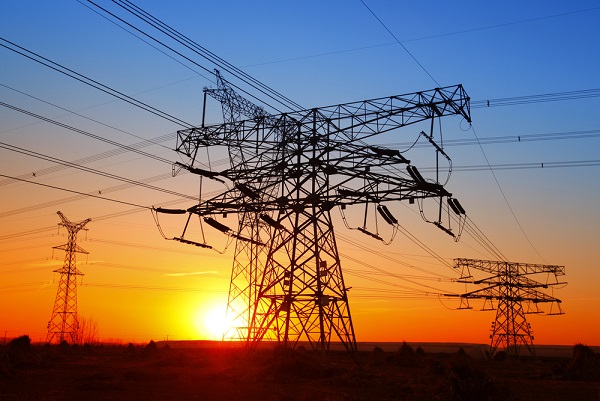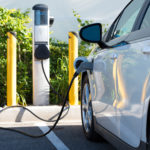
By David Lewis, Founder and CEO, MoveEV
November 22, 2023
When President Biden announced an ambitious set of EV adoption goals in April, the effort posed an obvious question: how will EV charging interact with the grid, and what can be done to help?
The current energy grid was not designed for vehicles that require electricity for fuel. However, the expected surge in EV demand is proceeding in tandem with the evolution of the energy grid. Automakers and utilities “are now partners until the end of time, whether they like it or not,” Plug In America executive director Joel Levin recently told Utility Dive, adding that decisions made by automakers “have a huge impact on utilities, and vice versa.”
 Demand for energy is rising faster than upgrades to the transmission grid have evolved to meet it. The White House estimates that 70 percent of the nation’s transmission lines are more than 25 years old. Meanwhile, residential electricity use has climbed steadily over the last 25 years from 1.1 to 1.5 trillion kwH, according to the Department of Energy.
Demand for energy is rising faster than upgrades to the transmission grid have evolved to meet it. The White House estimates that 70 percent of the nation’s transmission lines are more than 25 years old. Meanwhile, residential electricity use has climbed steadily over the last 25 years from 1.1 to 1.5 trillion kwH, according to the Department of Energy.
McKinsey recently estimated more than 48 million EVs will be on the road by 2030, creating an annual charging demand of up to 230 billion kilowatt hours ― a vast leap from the estimated 11 billion kWh today. Overall, electric vehicles could drive a 38 percent rise in U.S. electricity consumption by 2050, according to National Renewable Energy Laboratory estimates. How can EV owners responsibly charge their cars without overtaxing the grid?
Thankfully, a nationwide effort is underway to allow EV drivers to maximize the capacity of the existing grid ― and, in some cases, even add to its capacity. Here are a few recent examples:
• Oncor Electric Delivery announced a collaboration with Toyota in December focused on vehicle-to-grid pilot technology, which would allow vehicles to flow energy from their battery back onto the electric grid.
• In March, Sunverge Energy, a “virtual power plant” platform for utilities and their customers, partnered with Eaton, an EV charging infrastructure platform, to “enable utilities to advance flexible load management, orchestrate, aggregate and value stack grid services providing resiliency, reliability and flexibility to the grid and accelerate decarbonization.”
• In April, New York-based Con Edison and Orange & Rockland partnered with an EV charging software company to provide cash incentives to EV drivers who charge their cars in their respective service areas.
• In May, California-based Pacific Gas and Electric announced an expanded project that would test the ability of BMW electric vehicles to return excess stored energy from their car batteries back to PG&E’s grid. In theory, the development of V2X (vehicle-to-everything) technology would allow EV batteries to be used for backup generation and other grid services.
Meanwhile, regional utility providers such as Con Edison, Orange & Rockland, Southern California Edison, and PG&E are instituting “time of use” incentives (lower electricity rates, rebates, etc.) to encourage EV drivers to charge during off-peak hours, when grid demand is lower. Baltimore Gas & Electric won approval from Maryland state regulators in 2019 to use the metering capabilities within EV chargers for a rebate program that comes with a time-of-use rate structure similar to California’s. Similar programs have been used in Minnesota, Colorado, Massachusetts, Rhode Island and Connecticut.
 Time of charging is important. Research from the Yale School of the Environment analyzed electricity demand in California in Sept. 2022. In the U.S. state with the most electric vehicles on the road, electricity demand had never been higher. The research concluded that, by charging EVs during the first half of the day (midnight to noon), electric vehicles could minimize their impact on the state’s electricity supply and take advantage of more sustainable energy sources.
Time of charging is important. Research from the Yale School of the Environment analyzed electricity demand in California in Sept. 2022. In the U.S. state with the most electric vehicles on the road, electricity demand had never been higher. The research concluded that, by charging EVs during the first half of the day (midnight to noon), electric vehicles could minimize their impact on the state’s electricity supply and take advantage of more sustainable energy sources.
Further, by charging their fleet cars at home as opposed to a centralized workplace parking lot, employees can disperse the electricity demand, reducing the possibility of a grid overload. This lesson isn’t unique to California. According to Ark Investment Management analyst Sam Korus, if EVs are charged during non-peak hours, the grid can more than accommodate the entire U.S. vehicle fleet today.
Ultimately, several technological and policy-based solutions will need to converge to make sure the grid can handle the increased demand from EV charging. At-home charging is a critical piece of the puzzle, and light-duty fleet owners can help by taking their commuter cars home to charge during off-peak hours. As studies and pilots show, when given the right mix of incentives and technology, drivers will choose to charge their vehicles when the grid is least stressed. With smart policy and innovations in tech, EVs could potentially help rather than harm our evolving electrical grid.
About the author
 David Lewis is the founder and CEO of MoveEV, an AI-powered EV transition company that helps organizations convert fleet and employee-owned gas vehicles to electric and reimburse for charging at home. Dave is an experienced B2B software executive with significant experience systematically creating value through new product offerings, M&A, and transforming tech-enabled services to SaaS.
David Lewis is the founder and CEO of MoveEV, an AI-powered EV transition company that helps organizations convert fleet and employee-owned gas vehicles to electric and reimburse for charging at home. Dave is an experienced B2B software executive with significant experience systematically creating value through new product offerings, M&A, and transforming tech-enabled services to SaaS.


